Last week, my advisor and I attended the 13th Conference on Attention and Perception in National Chung-Cheng University in Chayi (Jiayi), Taiwan. This year's topic was Faces, Objects, and Consciousness, in the conference, two keynote speakers—Dr. Isabel Gauthier from Vanderbilt University and Dr. William Hayward from Hong Kong University—gave the audience inspiring talks. I want to learn more about the subjects after listening to their talks.
My advisor hosted a day trip in Taipei for Dr. Gauthier and Dr. Hayward, and my advisor had asked me to plan the trip for them few weeks before this trip. I was pretty anxious. Even though I have met many foreign friends in Taiwan, it was my first time to organize day trip for prestigious professors from foreign countries. In concern about the terribly high temperature and humidity, I planed different traveling routes for them, of course, my advisor was the one who could make the final decision. I thought it was an important job at very beginning, but the trip turned out to be a very pleasant trip. Dr. Gauthier and Dr. Hayward are very nice people. The day trip was great because of their great sense of humour and friendliness.
In the morning of last Saturday, my advisor and I went to Taoyuan to pick up Dr. Gauthier and Dr. Hayward, and then we went to Taipei, started our trip around 10 a.m.
Our first stop is National Palace Museum. (I don't post Dr. Gauthier's and Dr. Hayward's pictures because I don't have their permission.)
I actually took those pictures a day before our day trip because I went there to preparation for their day trip. I tried to figure out best visiting route in the museum.
National Palace Museum
Falun Gong members in Taiwan posted protesting banners on the rails outside of the museum, asking stop persecuting Falun Gong members in China. The slogans were written in various languages.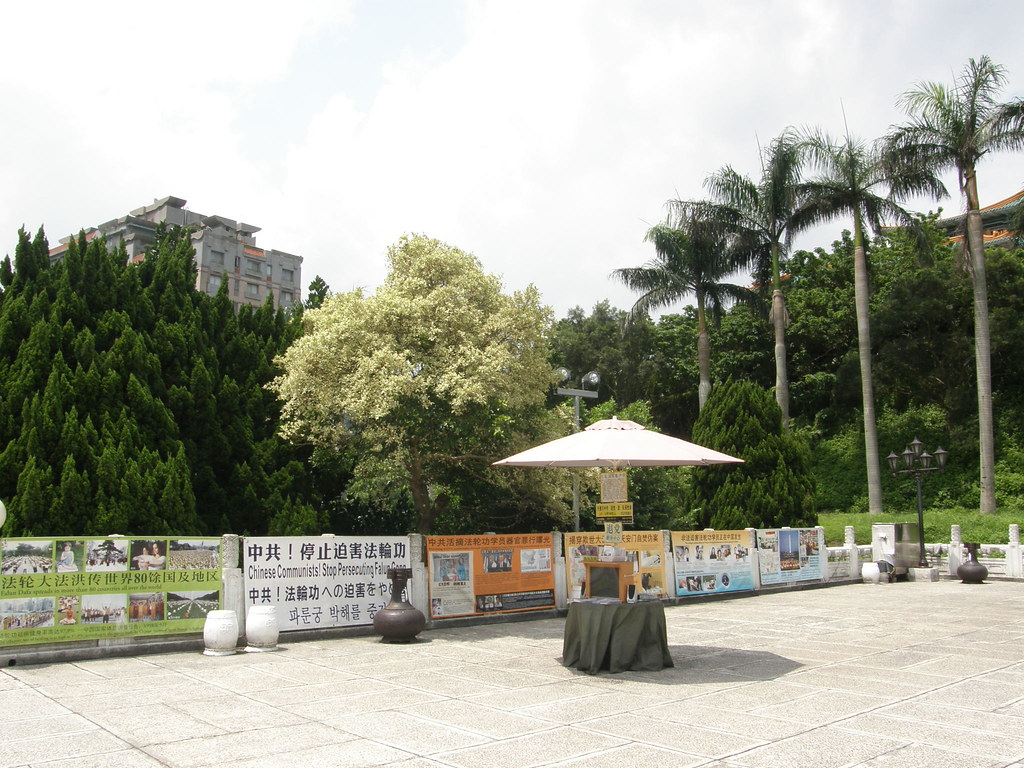
Buildings block great view of lush hills in front of the National Palace Meseum.
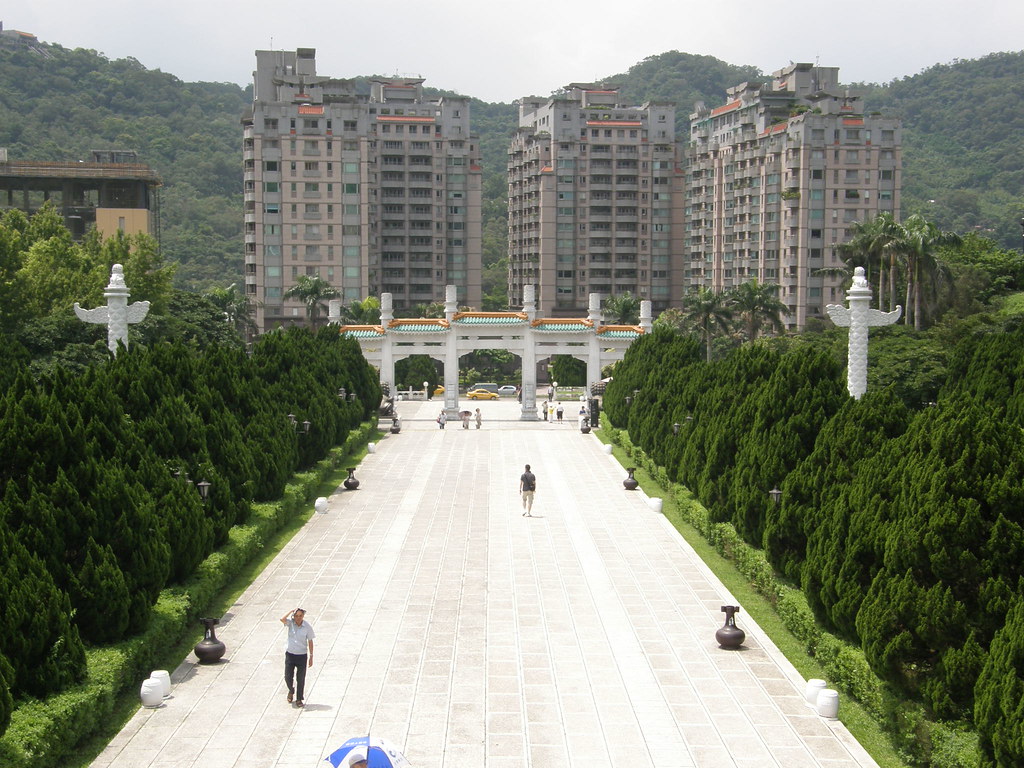 When I was a kid, after those buildings were built, there were rumours circling among Taiwanese. According to those who believed in Feng-Shui the National Palace Museum was nestled in a Dragon's Notch, however; those buildings ruined the museum's great Feng Shui. The Qi of the country (or KMT at that time) was demaged; it was an ominous sigh and led to the power's downfall. I don't believe that, but it is interesting to think about it or tell friends this anecdote.
When I was a kid, after those buildings were built, there were rumours circling among Taiwanese. According to those who believed in Feng-Shui the National Palace Museum was nestled in a Dragon's Notch, however; those buildings ruined the museum's great Feng Shui. The Qi of the country (or KMT at that time) was demaged; it was an ominous sigh and led to the power's downfall. I don't believe that, but it is interesting to think about it or tell friends this anecdote.A view that looks out through transparent glass and drawing-like calligraphy. I quiet like the calligraphy written on the glass, it is too bad that the backdrop is buildings, but not lush hills.
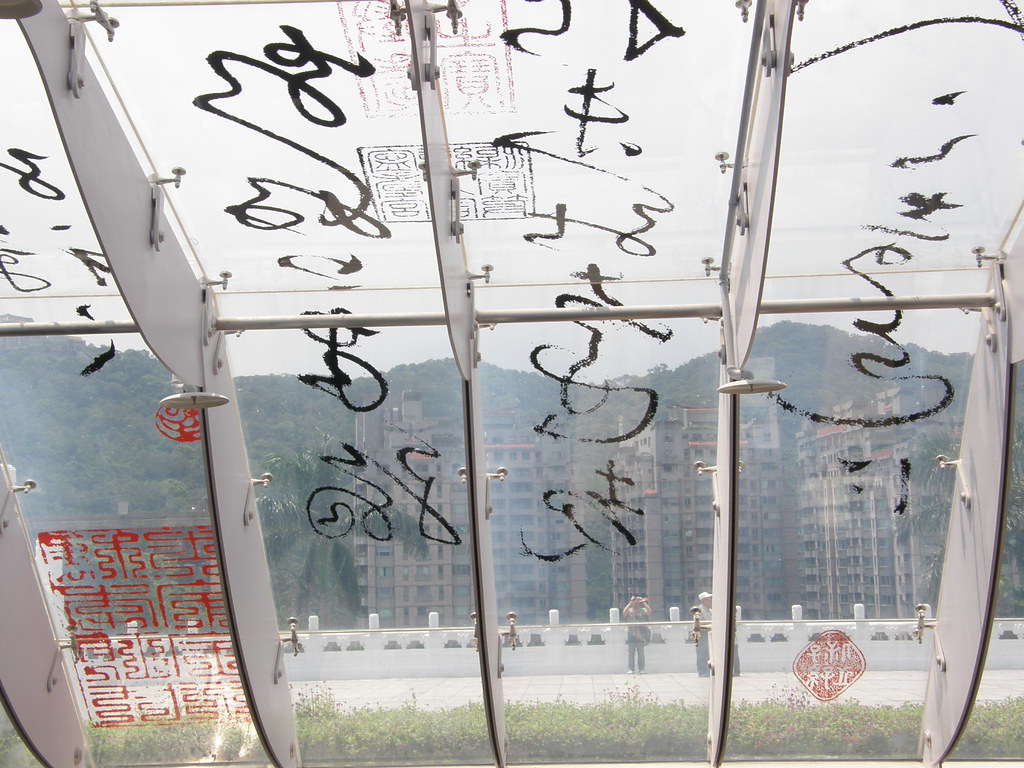 When I was a kid, this history textbooks I read introduced Chinese culture had five-thousand-year-long history. The banner here says Chinese culture has eight-thousand-year-long history. I know that there is new evidence from anthropology and archeology that dated the beginning of Chinese culture back to eight thousand year before. I don't know the details though. :-(
When I was a kid, this history textbooks I read introduced Chinese culture had five-thousand-year-long history. The banner here says Chinese culture has eight-thousand-year-long history. I know that there is new evidence from anthropology and archeology that dated the beginning of Chinese culture back to eight thousand year before. I don't know the details though. :-(I should spend some time updating my knowledge about Taiwanese and Chinese cultures.
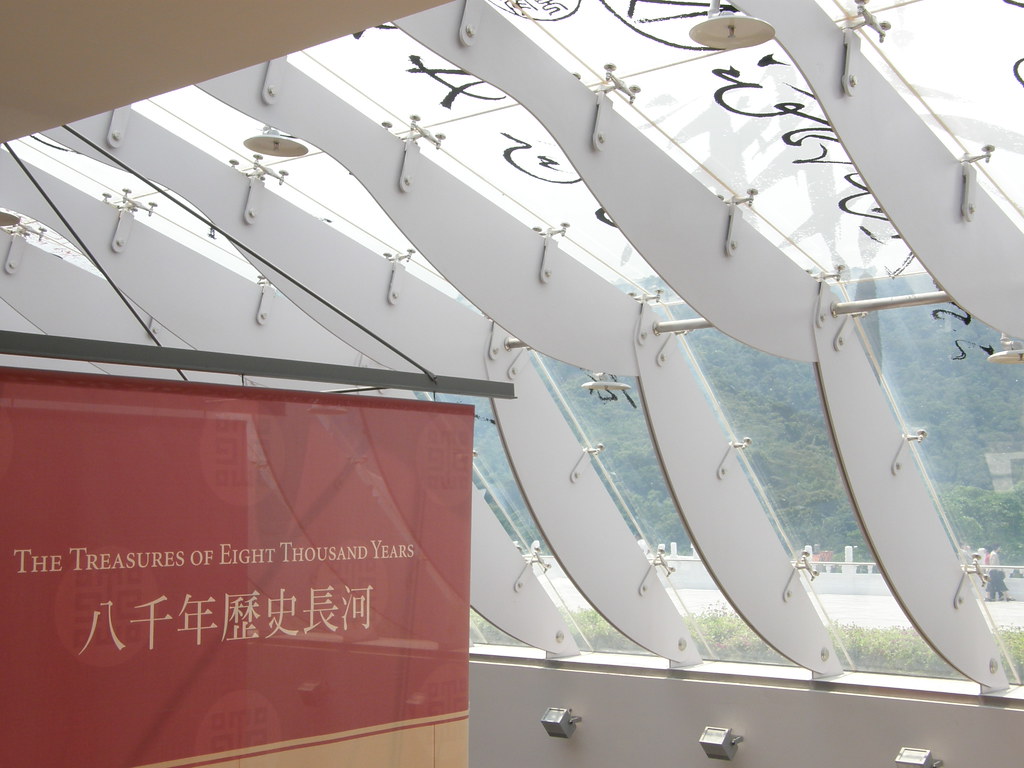
My ticket, the price of student ticket is NT$80, and NT$150 for general visiters. (As far as I know, the National Palace Museum has free entry time from 5:00 p.m. to 8 p.m. every Saturday.)
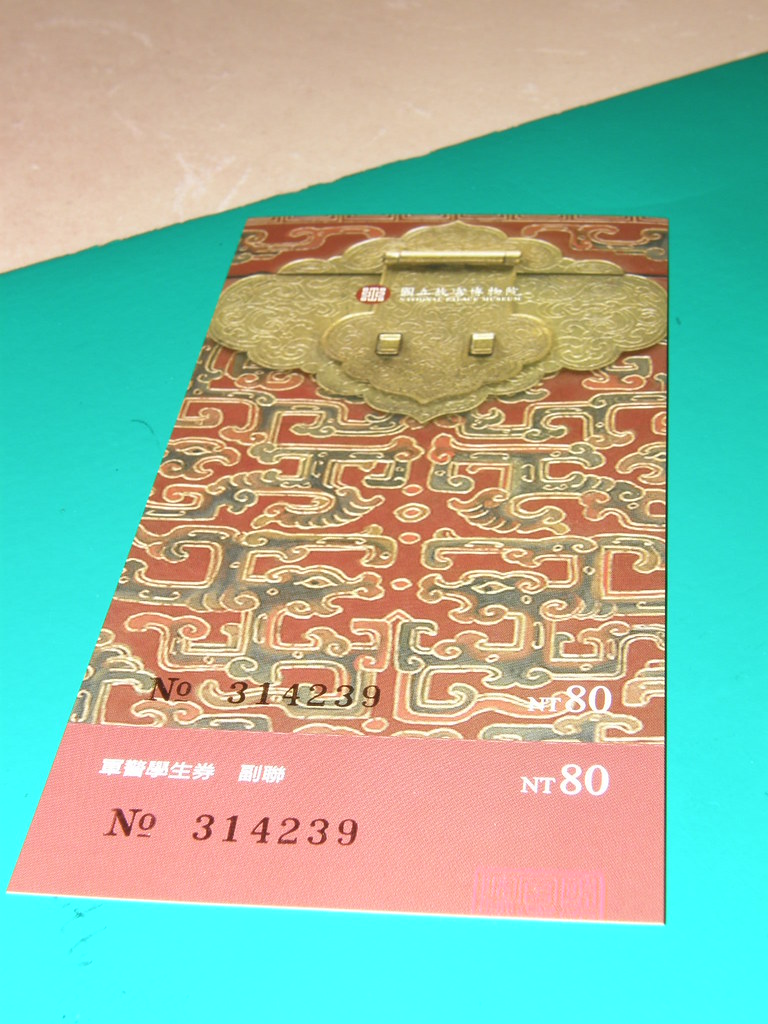
We spent about 1 hour in the museum, there were many goureous art pieces. I could spend a day there if I had had more time. We browse art pieces made in different dynasties, and we were especially attracted to calligraphy.
We talked about how to recognize Chinese characters, how to determine the criteria the evaluate great calligraphy. I couldn't explain how Chinsese determine great calligraphy well. I pretty much rely on Wikipedia, here is some introduction in English: http://en.wikipedia.org/wiki/Calligraphy#East_Asian_calligraphy
I had some ideas coming to my mind that those exhibits demonstrate the progress of Chinese technology, but not science. Why didn't Chinsese culturefacilitate the development of science?
After browsing of different exhibitions in the museum, we had our lunch in Silk Palace right next to the first exhibition building.
Note: About Dragon's Notch
I am not a Feng-Shui master so I don't know the definition of Dragon's Notch very well. And I don't know if I translate Long Xie into Dragon's Notch really deliver its meaning well.
I know that a place defined as a Dragon's Notch must have mountains shried it in its right and left and back sides, and there must be a river flowing in the front. The mountains in the left symbolize Qing-Long (青龍) which means indigo dragon; the mountains in the right symbolize Bei-Hu (白虎) which means white tiger; the mountains in the back symbolize Xuan-Wu (玄武), a black tortoise-like mythological creature; and the flowing river in the front symbolize Zhu-Que (朱雀) which is a scarlet phenix. I don't believe in Feng-Shui; but I think this kind of terran actually forms best spot for living or for military purpose.
Weird Idea:
I think Helm's Deep in J. R. R. Tolkein's Middle Earth is like a Dragon's Notch.
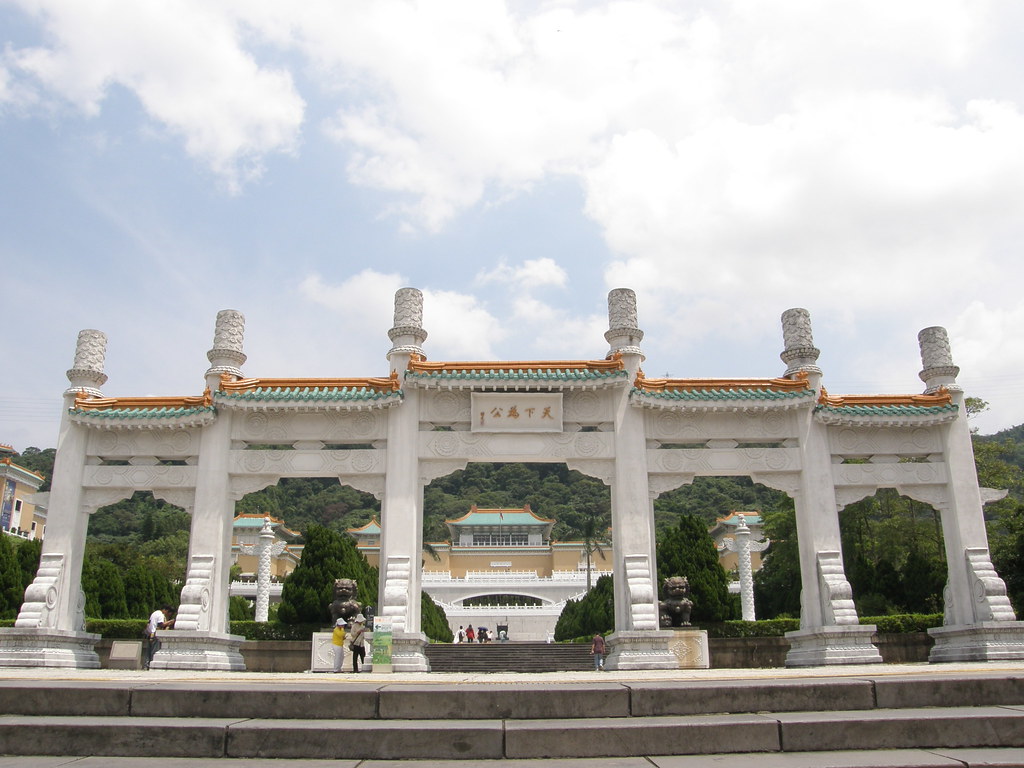
No comments:
Post a Comment